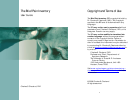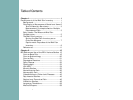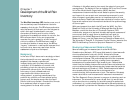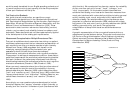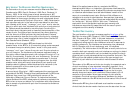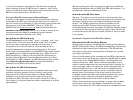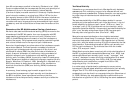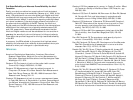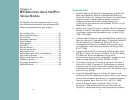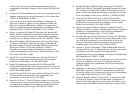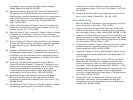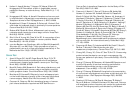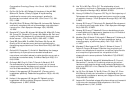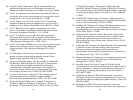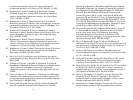
5
Early Version: The Wisconsin Brief Pain Questionnaire
The first version of our pain measure was the Wisconsin Brief Pain
Questionnaire (BPQ; Daut & Cleeland, 1982; Daut, Cleeland, &
Flanery, 1983). In the initial phase of scale development, 667
patients with cancer and 32 patients with rheumatoid arthritis were
administered a three-page questionnaire and interviewed about
the basic parameters of their pain (Daut et al., 1982). Patients who
had experienced pain in the last month were asked to rate their
pain intensity at its “worst,” “average,” and “now” and to rate the
extent to which pain had interfered with activity and enjoyment of
life. Patients were also asked to mark their pain location(s) on
front/back body diagrams and to describe their perception of the
cause of pain, the types of pain treatment they were receiving,
and the amount of relief provided by their treatment. Patients
were also asked to describe the quality of their pain by choosing
words among a list of verbal descriptors derived from the McGill
Pain Questionnaire (Melzack, 1975).
The design of the four-page BPQ was based on this initial
questionnaire. In the BPQ, a 0–10 numerical rating scale was used
to measure three pain severity items: “worst” in the past month,
“average,” and “now,” where 0=no pain and 10=pain as bad as
you can imagine. The interference items were measured using a
five-option verbal descriptor scale, with ratings of 0=not at all, 1=a
little bit, 2=moderately, 3=quite a bit, and 4=extremely. The recall
period for both severity and interference scales was “in the last
week.” The BPQ also retained the body diagram from the initial
questionnaire, along with word descriptors of pain quality and
questions about types and effectiveness of pain treatment, the
patient’s perception of the cause of pain, and certain
demographic information.
A second study (Daut et al., 1983) investigated the psychometric
properties of the BPQ. This set of analyses was based on BPQ data
obtained from more than 1200 patients with cancer at The
University of Wisconsin Cancer Center. To determine test-retest
characteristics of the BPQ, subsamples of patients completed the
BPQ on two or more occasions. For comparison with other disease
sites, a sample of patients with pain from rheumatoid arthritis was
also surveyed.
6
Most of the patients were able to complete the BPQ by
themselves with little or no instruction; others were interviewed to
complete the questionnaire. A subset 25 patients completed both
an interview-administered and self-administered version of the
survey in counterbalanced order. We found little difference in
ratings due to mode of administration. As expected, test-retest
reliability varied by item. Short (days) test-retest reliability was 0.93
for “worst pain,” but only 0.59 for “pain now.” Preliminary
exploration found that patient-reported pain severity and
interference were directly associated with the use of opioid
analgesics and the severity of disease.
The Brief Pain Inventory
The next iteration of our pain measure was the long form
of the
Brief Pain Inventory (BPI; Cleeland, 1989; Cleeland, 1990; Cleeland,
1991; Cleeland & Ryan, 1994). In this new instrument, we added
the item “least pain” to the severity items and dropped the
categorical rating scale for the interference items, in response to
patient preference. The interference items were now presented
with 0–10 scales, with 0=no interference and 10=interferes
completely. The initial version of the BPI used a recall period of one
week for both pain severity and pain interference ratings, included
questions about medication use, and asked the patient to check
potential pain quality descriptors that may describe their pain. The
BPI long form also asked questions about the percentage and
duration of pain relief and nonmedical methods used to relieve
pain.
This version of the BPI proved to be too lengthy for repeated use in
clinical monitoring or as a repeated measure in research. As a
result, we developed a shorter version
of the BPI. This version of the
BPI retained the front and back body diagrams, the four pain
severity items and seven pain interference items rated on 0–10
scales, and the question about percentage of pain relief by
analgesics. The most important difference between the longer
and shorter versions of the BPI is that the latter uses a 24-hour recall
period.
Whereas the BPI long form is still used as a baseline measure in
clinical trials, the shorter version has become the standard for use



